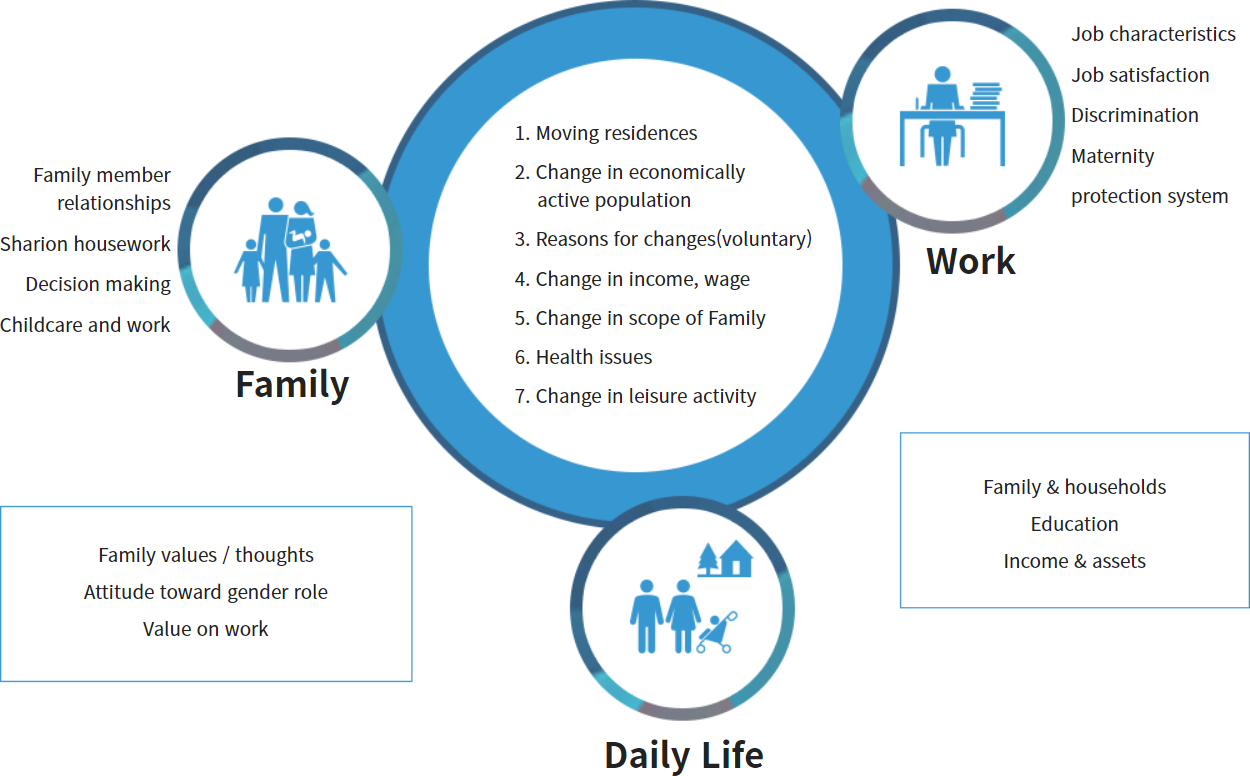It is essential to establish a longitudinal database of women's lives for the establishment and evaluation of policies on women based on a multifaceted analysis of their economic activities and family life. Establishment of longitudinal database in a panel form plays a crucial role in precisely and exactly estimating the effect of policy tools by controlling unobserved heterogeneity of female individuals. It is also instrumental in estimating policy effectiveness through the application of various techniques of longitudinal statistical analysis and in designing diverse policies which can be effectively applied to policy target groups.
Since its launch of the KLoWF project in 2006, the Korean Women's Development Institute has built a panel of 9,997 women aged from 19 to 64 who live in 9,068 households across the nation. As for the panel survey, the first and second wave surveys were conducted every year, in 2007 and 2008, and the third to seventh wave surveys, every other year, in 2010, 2012, 2014, 2016 and 2018, respectively.
The main survey comprises questionnaires for households, individuals and jobs, which investigate women's economic activities, family life, family values, health and so forth based on three major survey areas of family, work and daily life.


